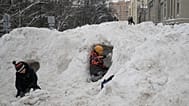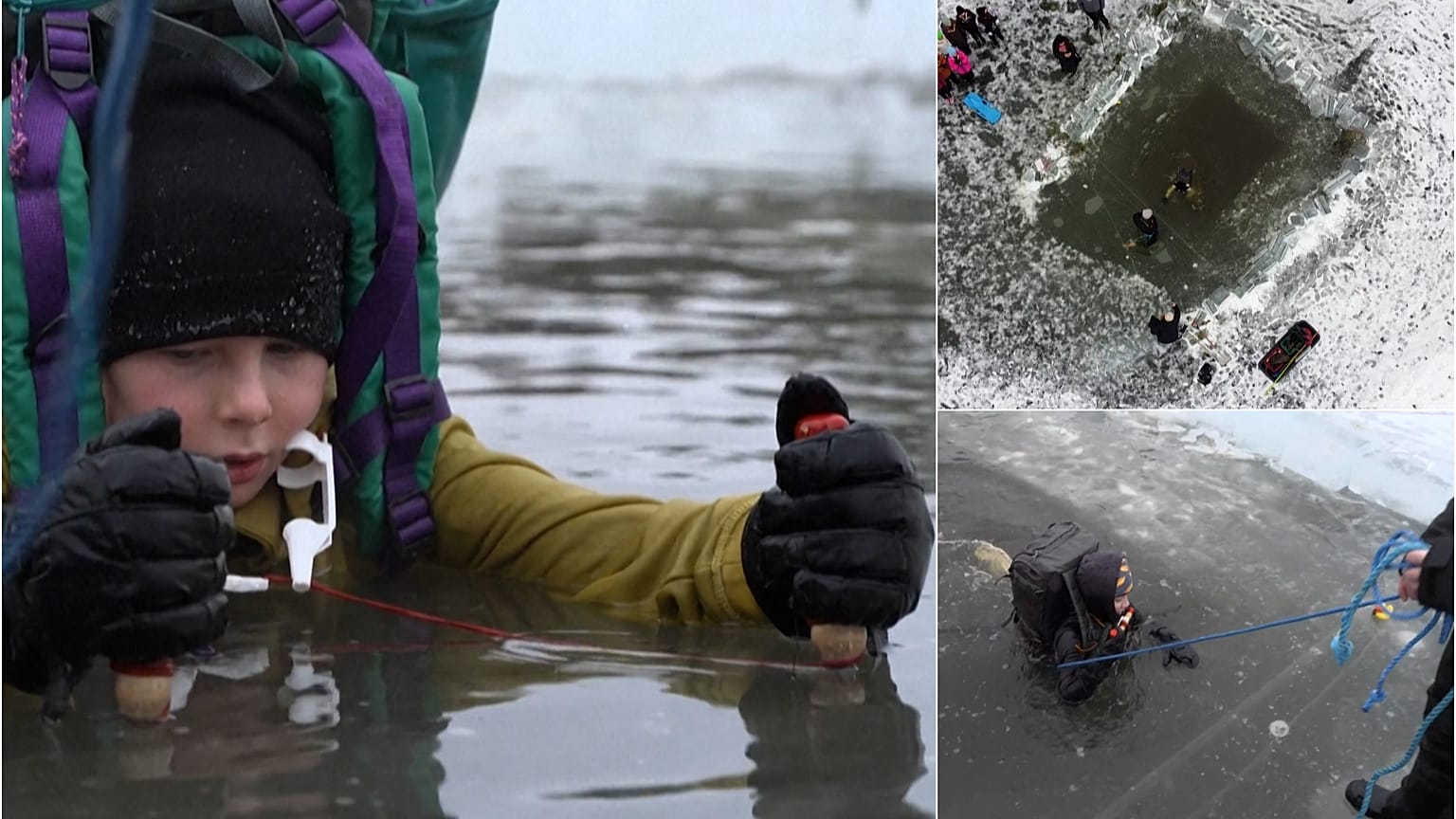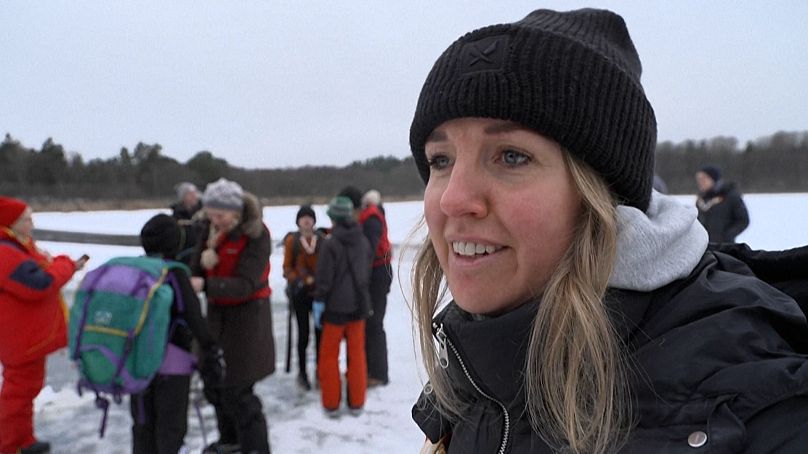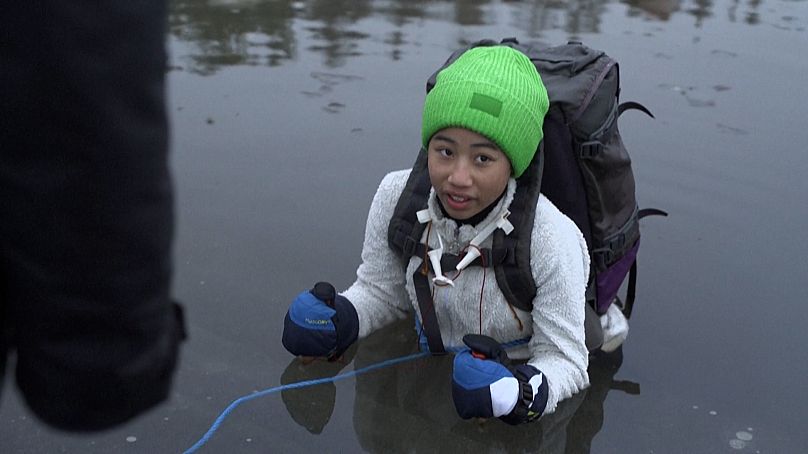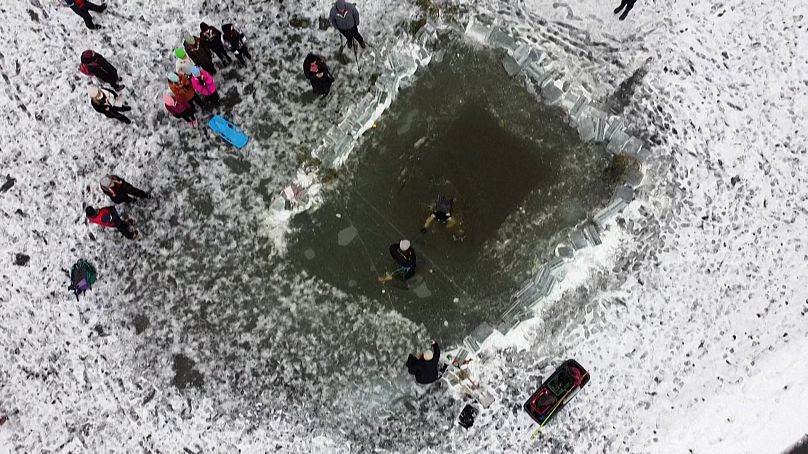Safety takes on a new dimension for many young Swedes as sub-zero temperatures and the surrounding conditions are a daily danger in winter. Frozen lakes are common playgrounds which means first-aid training and rescue to prepare for the worst is obligatory from a young age.
The frigid water under the frozen Ravalen lake north of Stockholm doesn't intimidate Elton as the 11-year-old schoolboy takes the plunge to the applause of his classmates.
Forty pupils are taking part in an "isvaksovning", or a hole-in-the-ice exercise, part of their school's physical education class to learn what to do if they ever fall through the ice on one of Sweden's many lakes or out in the archipelago.
Every day for three weeks, 750 pupils in Sollentuna municipality will take turns jumping into the hole in the ice, which measures about two by four metres.
Courses like this are common in the Nordic country. For the students taking part on this day, it's optional if they want to jump in - but all of them do.
Holding his head above the one degree Celsius water, Elton grabs two small ice picks hanging around his neck, jabs them into the ice and drags himself out onto the snow-covered lake.
A pair of picks can save a live
Many Swedes would not think of stepping out onto the ice without a pair of picks because it's extremely difficult to escape the chilly water and get back onto the ice.
"It was much colder than I thought it would be," says Elton as he warms himself around a fire pit together with his classmates.
"But I still managed to stay in for 30 seconds". His mother, Marie Ericsson, who works in IT, came to film the scene. "It's super important. It's really good knowledge and it feels safer for us, because they are always playing around lots of lakes," she says.
The kids are fully clothed when they jump in wearing winter bonnets, mitts, shoes or boots and all.
They have big backpacks strapped on, which also help them float, and are attached to a safety rope held by gym teacher Anders Isaksson.
Outdoor way of life
Some of the kids shriek when they land in the cold water. "Good! Breathe calmly", Isaksson reminds them as they slither out onto the ice. Most of the kids look apprehensive before it's their turn.
But once they're done most seem surprisingly unfazed, albeit freezing and soaked. They run to shore to change into dry clothes, and gather around a fire pit.
The classes gained importance in recent years amid a rise in ice accidents after declining for decades.
According to the Swedish Life Rescue Society, 16 people died in Sweden after falling through the ice in 2021, mostly elderly people compared to 10 the previous year. Around 100 incidents were reported.
"This is important because this is a country where outdoor activities are a big part of people's lives," Isaksson notes.
After a dip, the children run to shore to change into dry clothes and gather around a fire pit. For some, the plunge also offers an opportunity to test their mettle. When Siri Franzen, 11, jumps in she endures a full two and a half minutes before dragging herself up.
"I am very proud of her," her mother Louise tells. "She has just beaten her brother's record from four years ago."



